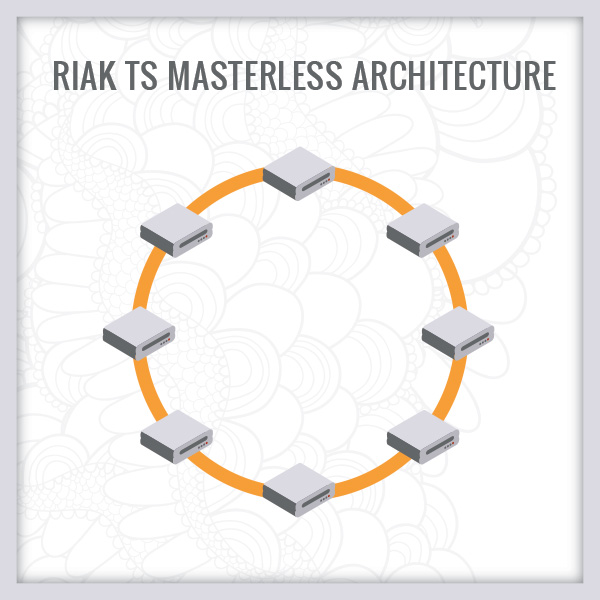Resiliency matters.
The Riak TS masterless architecture is designed to read and write data even in the event of hardware failures or network partitions. Data is evenly distributed across the Riak “Ring” and, by default, there are three replicas of your data. This ensures at least one copy of your data is available for read operations.
Riak TS is a distributed system with no central coordinator. It is easy to set up and operate. The masterless architecture makes it easy to add and remove nodes from a cluster.
Riak’s focus on availability makes it a good fit whenever downtime is unacceptable.

DISTRIBUTED SYSTEMS ARE A CHALLENGE TO GET RIGHT
Getting distributed databases right can be a challenge, especially ensuring the resiliency of your system. Riak TS was built to address the problem of distributed database resiliency.
Riak TS is a time series database built from the ground up to safely distribute data across a cluster of servers, called nodes. A group of nodes form a Riak TS cluster, and every node in the cluster can serve read and write requests.
Riak TS distributes data evenly across the cluster, and due to the masterless architecture, nodes can be added with minimal reshuffling of data and no downtime. Should one node fail, another node in the cluster can still respond to read and write requests. With multiple copies of the data there is no single point of failure.
BENEFITS OF RESILIENCY IN RIAK TS
Ensure your IoT or time series application is always available for both read and write operations. This is especially important when ingesting potentially millions of time series data points.
Reduce Downtime
Riak TS is the most resilient NoSQL database and ensures your data is always available, even in the event of hardware or network failures.
Reduce Costs
High resiliency means fewer resources are required to manage outages. You can replace lost nodes during normal business hours … let your operations team sleep.
Scale Easily
A masterless architecture makes it easy to add nodes to your cluster. Scale up and down to meet your business needs.
